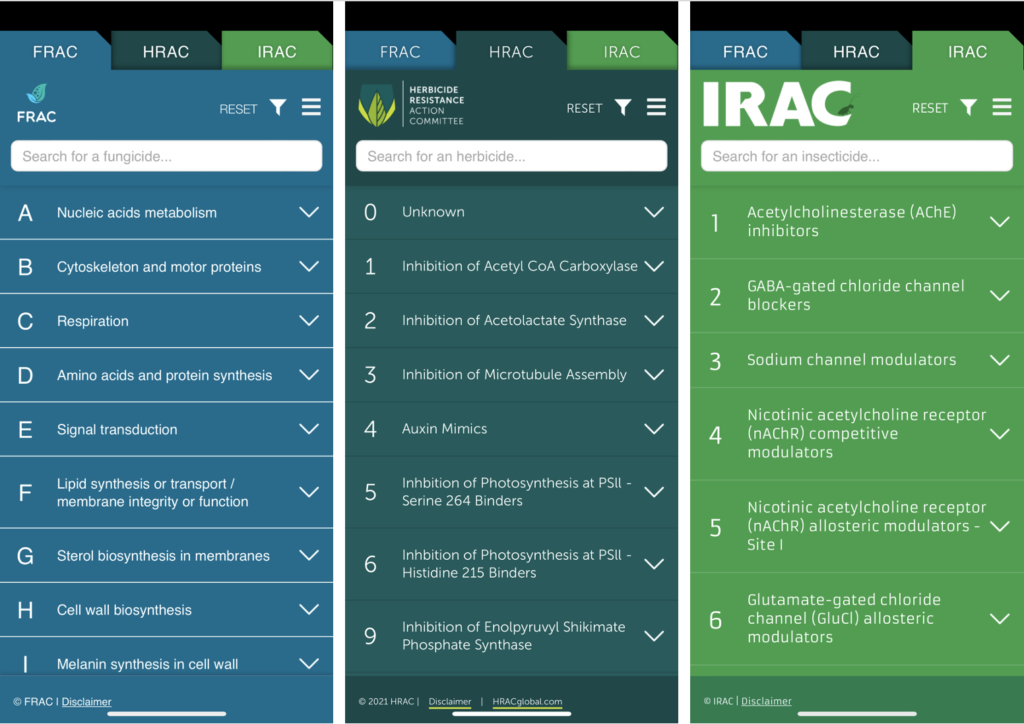Crop Protection Team News
-
Trends in IPM: A commentary from an IRAC perspective
This short paper outlines the IRAC International position on trends in Integrated Pest Management (IPM) in relation to insect resistance management. Though IPM is not IRAC International’s primary expertise, IRAC will, where appropriate, seek to enable the dissemination of information on IPM options developed by research institutions, academia, or government agencies for certain crop-pest situations through our outreach channels. IRAC International encourages IPM in the context of resistance management (RM).
-
Latest updates to the MoA Classification (version 11.2)
New versions (11.2, August 2024) of the IRAC MoA resources have been released and posted on the website. The changes include the following updates:
- Group 37: A new MoA Group which has been named “Vesicular acetylcholine transporter (VAChT) inhibitors”.
- Group 37: Oxazosulfyl has been moved from Group UN to the new Group 37.
- Group UNE: Sabadilla Extract has been classified as “Botanical essence including synthetic, extracts and unrefined oils with unknown or uncertain MoA”
- Group UNM: Polydimethylsiloxane (PDMS) has been classified as “Non-specific mechanical and physical disruptors”
- Group 35: Vadescana has been classified as “RNA Interference mediated target suppressor” in the MoA Classification under Appendix 6 as pending registration.
- Group UNM: Perlite has been classified as a “Non-specific mechanical and physical disruptor” in the MoA Classification under Appendix 6 as pending registration.
The updated resources, available for download from the IRAC website, are:
-
IRAC Guidance: Factors involved with lower-than-expected insecticide field performance are often not related to insecticide resistance.
Unexpected crop damage by a pest after a foliar application of an insecticide has been made is often firstly assumed to be because of pest resistance, but commonly there are many other factors why insecticide applications can fail to meet expectations. Before associating insecticide resistance as the reason for crop failure, commonly made mistakes regarding application decisions and practices should be excluded. Many of the reasons for control failures can be avoided by reading product labels carefully and by following label instructions fully. This guideline outlines some of the key factors and considerations for foliar applications of insecticides.
-
New versions (11.1, January 2024) of the IRAC MoA classification and associated resources have just been released and posted on the website.
The Changes include the following updates:
Group 4E Nicotinic acetylcholine receptor (nAChR) competitive modulators – New Active: Fenmezoditiaz
Group 23: Inhibitors of acetyl-CoA carboxylase – New Active: Spidoxamat.
Group 35 RNA Interference mediated target suppressors New Group and Active: Ledprona
Group UNF Fungal agents of unknown or uncertain MoA New Fungal Agent added: Akanthomyces muscarius Ve6Resources:
-
IRAC Nematicide MOA Classification Poster presented at the 53rd Annual Meeting of the Organization of Nematologists of Tropical America (ONTA) , Cairo, Sept 2023
As part of continued awareness efforts, the IRAC Nematode WG Poster “THE IRAC INTERNATIONAL MODE OF ACTION CLASSIFICATION SCHEME FOR NEMATICIDES” was presented at the 53rd Annual Meeting of the Organization of Nematologists of Tropical America (ONTA) held jointly with the Egyptian Society for Agro-Nematology (ESAN) annual meeting in Cairo, Egypt from 24 to 29 September 2023. Over 80 nematologists, mainly from North & Central America, Europe, the Middle-East and Africa, attended the meeting. The poster was well received and it was an ideal opportunity to raise awareness of the work of the IRAC International Nematode WG and to encourage those attending to reference the work and act as advocates for using such schemes in crop protection labelling in their countries.

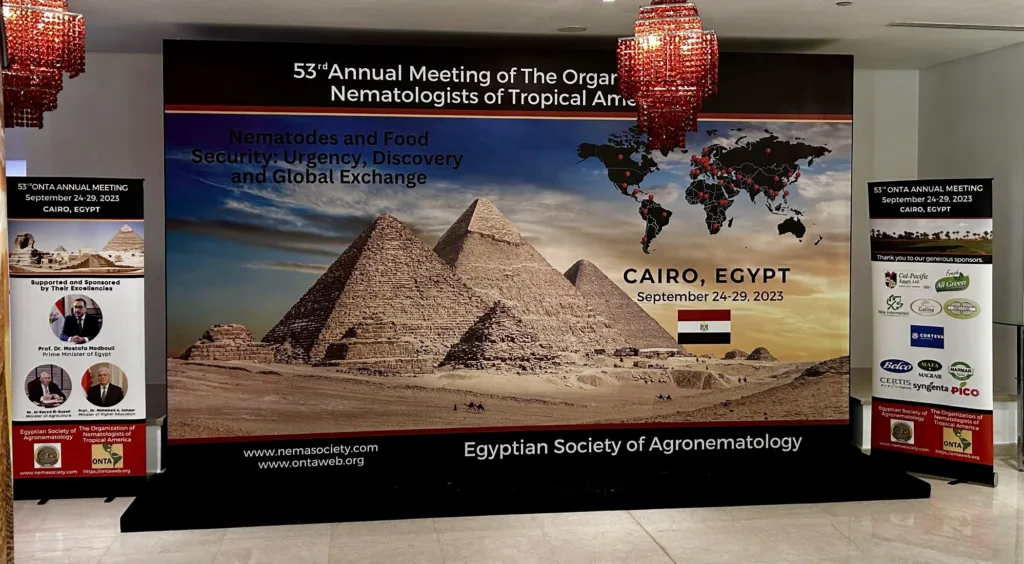
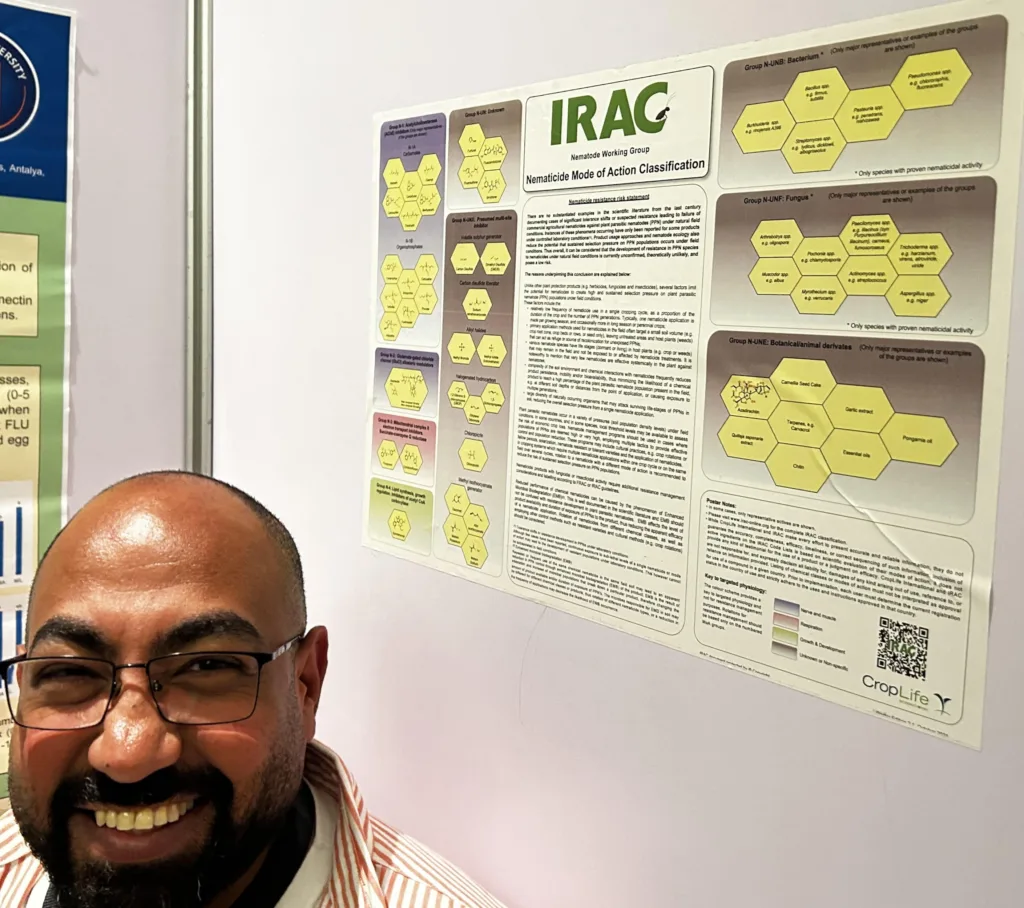
Tamer Victor, Corteva Agriscience Egypt -
Insecticide Mixtures and Resistance Management – Updated Guidance
The combined application of two insecticides with different modes of action (MoA) is an increasingly common approach to insect pest management. Insecticide mixtures (tank-mix or pre-formulated mixture) are applied to crops for pest management for many different reasons. These reasons include to broaden spectrum, to combine different technical characteristics of insecticides, or to combine two modes of action to control species where single compound applications do not provide sufficient control. Mixing insecticides, may also offer a benefit for insecticide resistance management (IRM). In the guidance document IRAC presents an up-dated mixture statement and the key considerations supporting it.
-
57th IRAC International Meeting, 14-17th March 2023, Japan
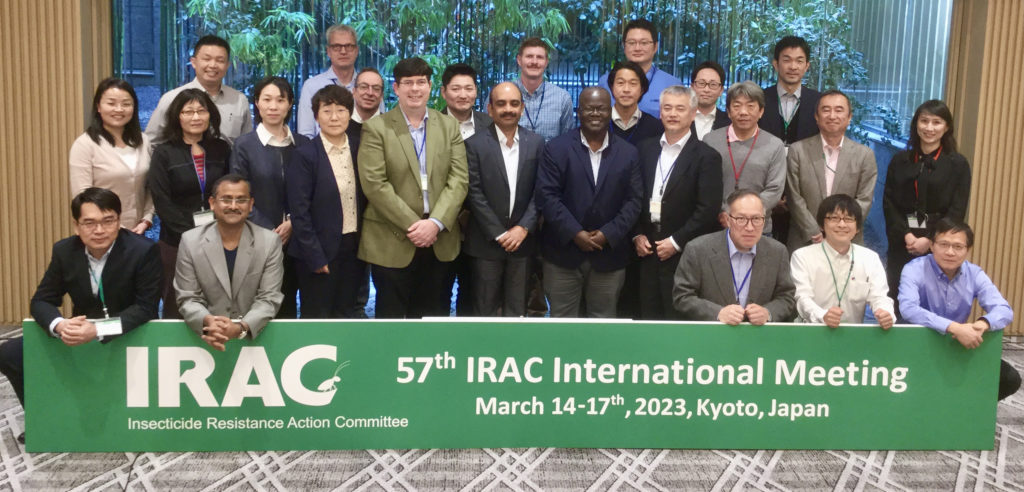
The 57th IRAC International Meeting was held in conjunction with IRAC Japan and IRAC Asia in Kyoto. This incorporated a visit to the Annual Meeting of Japanese Society of Applied Entomology and Zoology in Osaka where IRAC presentations were given in a seminar sponsored by the Japan Crop Protection Association on 14th March. Further meetings took place during the week as follows:
- 15th March: Meeting of the IRAC Executive and Crop Protection teams
- 16th March: Seminar at Kyoto university followed in the afternoon by meetings with IRAC Japan
- 17th March: Focus on IRAC Asia with presentations and discussion with various Country Teams
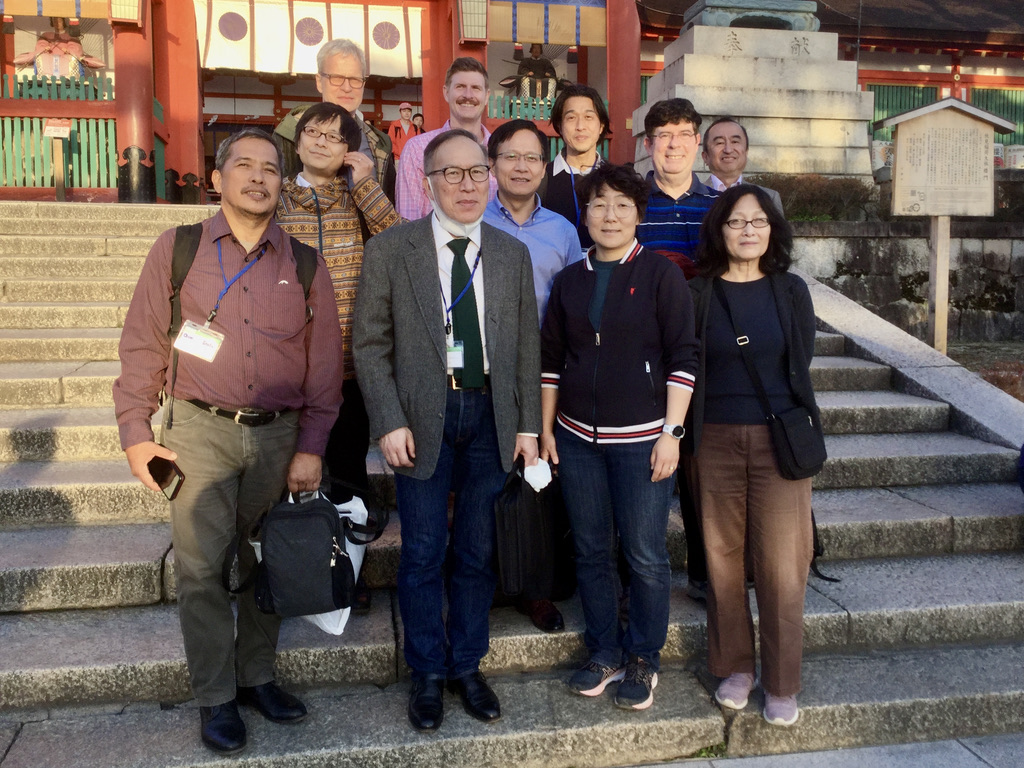
-
Latest updates to the MoA Classification
New versions (10.5, March 2023) of the IRAC MoA resources have just been released and posted on the website. The changes include the following updates:
- Group 29: Renamed to “Chordotonal organ nicotinamidase inhibitors”.
- Group 36: A new MoA Group which contains the active Dimpropyridaz, and is named “Chordotonal organ modulators – undefined target site”.
- Dicloromezotiaz, previously, in Appendix 6 (active ingredient pending registration), has been moved to Group 4E, Mesoinics, within Group 4, “Nicotinic acetylcholine receptor (nAChR) competitive modulators”.
- The new peptide, U1-AGTX-Ta1b-QA, has been classified as “Unknown or uncertain MoA – subgroup UNP (peptides of unknown or uncertain MoA)” and has been added to the Classification Scheme, Appendix 6, pending registration.
The updated resources, available for download from the IRAC website, are:
-
A new Bt corn brochure: Integrating Bt corn for fall armyworm (FAW) management
The IRAC Plant Biotechnology Working Group has completed a short poster brochure discussing the use of Bt corn to manage fall armyworm, Spodoptera frugiperda, in the Asia-Pacific region. The brochure complements IRAC’s poster and brochure developed in 2021 entitled “Manage fall armyworm in 3 steps”. The 3 steps are 1) Incorporate agronomic actions, 2) Identify pest and decide when to treat, and 3) Control FAW using IRM principles. The main IRM principle relayed in this brochure is the rotation in modes of action across sequential pest generations. While this 3 step process is effective for most countries in the Asia-Pacific region where crop protection tools are readily available, Bt corn is an important tool that also may be used by farmers in much of the Americas as well as in an increasing number of countries where fall armyworm has recently invaded like South Africa, Philippines, Pakistan, and Vietnam.
The Bt corn brochure is entitled “Integrating Bt corn for fall armyworm (FAW) management”. Effective Bt hybrids against fall armyworm are available and we want to ensure that farmers follow insect resistance management guidelines to maximize long-term benefits of the technology. This brochure also discusses a simple 3 step process: 1) Plan, 2) Plant refuge & monitor, and 3) Evaluate & Treat. The purpose is to be proactive in building an Integrated Pest Management (IPM) plan to use multiple tools and tactics against FAW founded on the host-plant resistance provided by Bt traits. Our goal is for farmers to be able to understand what a non-Bt refuge is, why it is important, and how to incorporate it when they plant a Bt corn hybrid. We also advise farmers to scout their fields and determine the need to incorporate additional control tools, such as insecticidal sprays, if indeed economic population levels of FAW arise in their Bt and non-Bt corn fields.
The new brochure is posted here and was developed in conjunction with CropLife International and with feedback from many contributors. If you have questions regarding this educational brochure supported by IRAC, please contact Alan Porter at enquiries@irac-online.org.
-
New IRAC, HRAC and FRAC Global Resistance Management Mode of Action App
The new Global Resistance Management (GRM) Mode of Action App, released earlier this year by the Resistance Action Committees (IRAC, HRAC FRAC), has just been updated with additional features. The App combines the information on the Resistance Action Committee’s standalone Mode of Action Apps into one application for ease of access by the user. The individual IRAC, FRAC and HRAC Mode of Action Apps are still available and all applications can be downloaded from the Apple App and Google Play stores.
